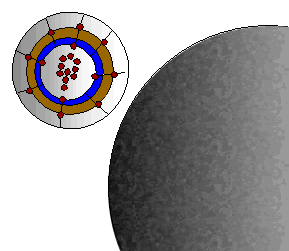
|
||||||||||||||
AIT ANNOUNCES FIRST MISSION TO THE STARS!
|
||||||||||||||
| The famous silence of AIT's Tranquility campus was broken with a shout this week as mankind's first interstellar ship left on the greatest mission of discovery ever! AIT's terahertz sail starship Sephyr will reach its distant goal, Epsilon Eridani, in less than 25 years, according to Chief Launch Specialist Bjarni Hodd and Mimir, his AI design partner … and the return trip will be even shorter! "We are very excited about this voyage. Epsilon Eridani is very similar to our solar system at its very beginnings, 4 billion years ago. The planets and protoplanets we have mapped from earth suggest we should learn an enormous amount about our own solar system, and possibly even about the beginnings of life itself!" says Hodd. According to Hodd, three things make this mission possible. "First, Sephyr will have an all AI crew. We don't have to worry about life support, and we can use accelerations human bodies simply could not withstand (30g on departure and up to 100g in the braking burst). Second, the AI crew allows us to use a very special kind of craft: a micrometer wave lightsail ship that's nearly all sail and almost no ship. This sail is made from 'sentient silk,' a metal-organic material developed right here on the moon, and it serves many purposes. Besides locomotion, the sail is also the cpu (and body) for the AI crew . . . not to mention acting as its own giant antenna. And finally, getting home's a snap - you just beam back! Having a crew who can be transmitted as electromagnetic waves certainly makes the return journey simpler! Pluto station will be configured to receive the returned transmissions. "OK, the bandwidth isn't going to be quite up to Earthnet 42 standards," jokes Mimir, "but I don't think anyone's going to be all that concerned with playing hypergames. We'll be pretty busy enroute, and of course we aren't going to notice the upload time coming back!" The crew expects to spend several years exploring the system, constructing
at least some equipment from native materials.
Mission Plan: Total trip duration (earth time): 22.3 years out, 5 years there, 10.7 years back =38 years. Total trip duration (ship time): 19.3 years out, 5 years there, 0 time back. = 24.3 years Steps on the way (not shown to scale!) Trip takes 22.3 years (19.3 years ship time) Crew explores system, builds reception station for follow-up teams.
After establishing base and initial exploration, advance team "beams
home" to Pluto station
|
||||||||||||||
| AIT Today Home |



